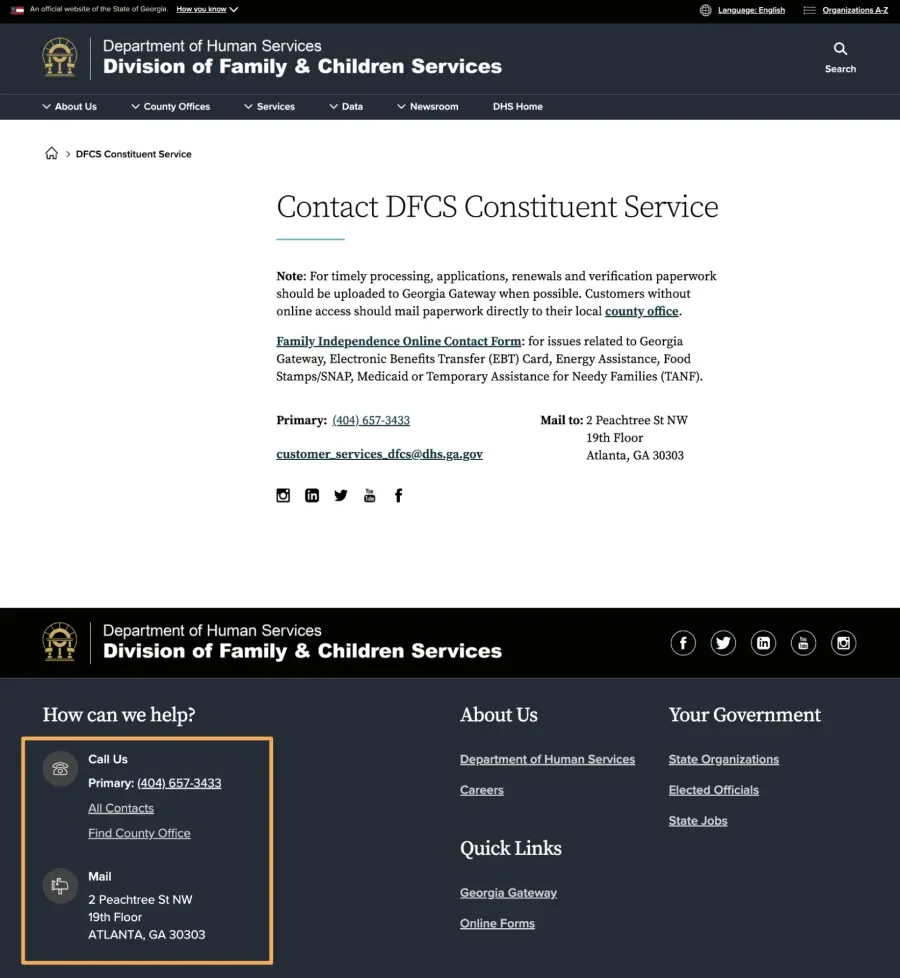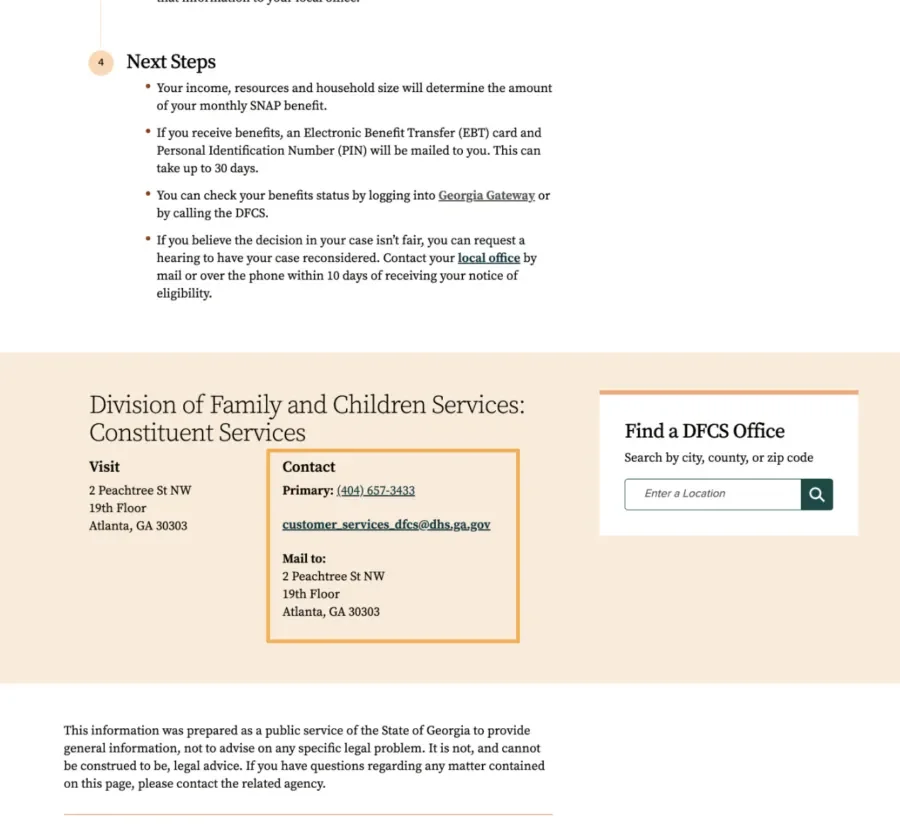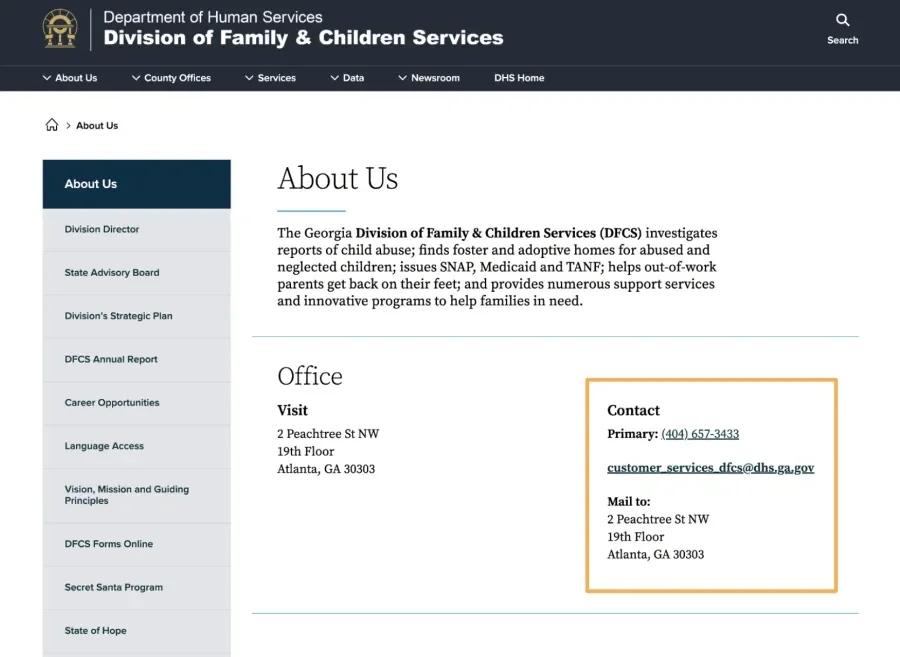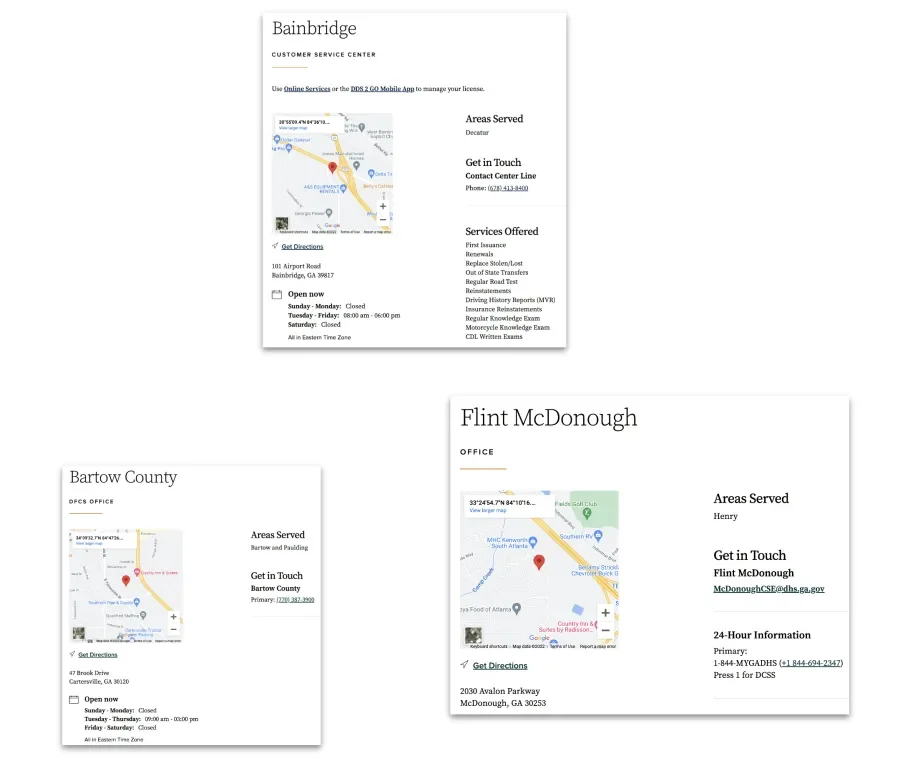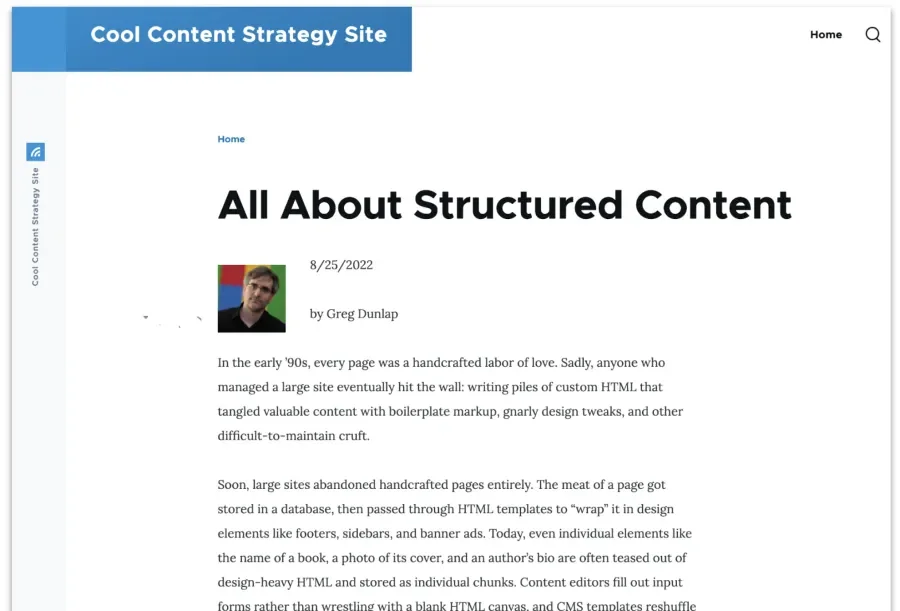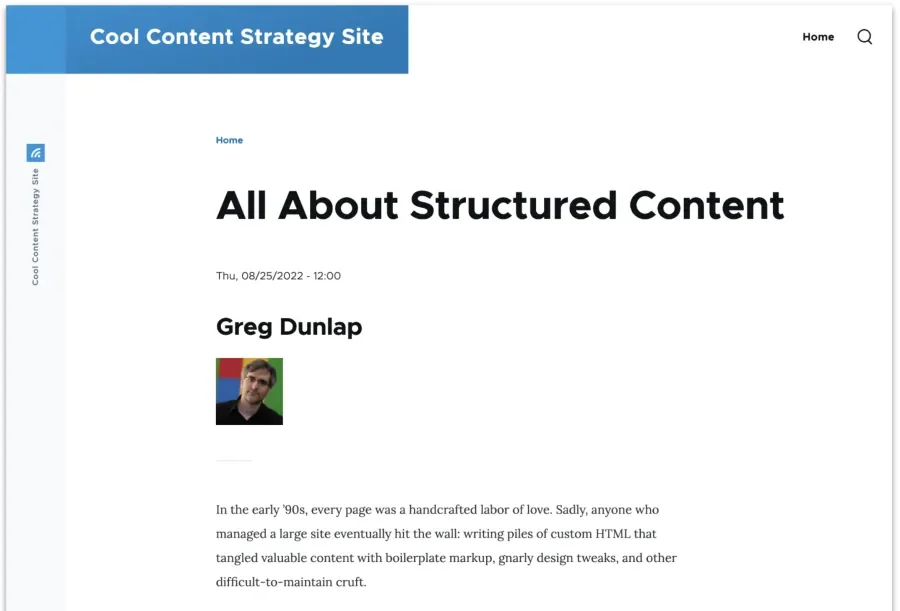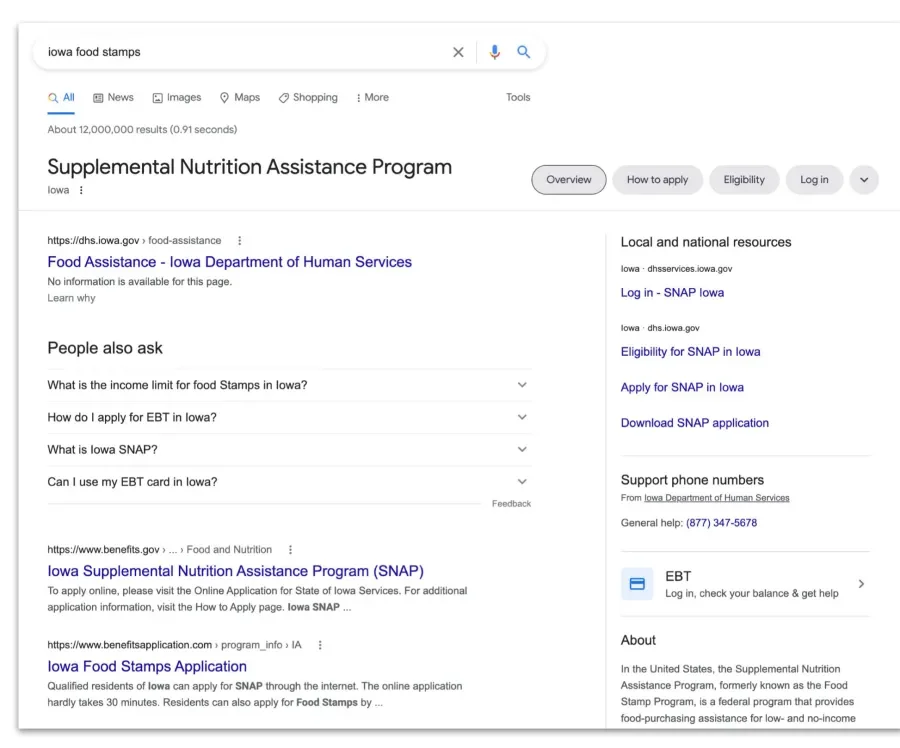Structuring content means taking a step back and looking at the individual pieces that make up your content. It also consists of adding support and context to deliver your content in the right format, to the right audience, and at the right time. Content is not just words. It's data. The words on the page need this supporting data to communicate their meaning, data that browsers and other devices can read.
Structured content is broken down into the smallest components possible, which are then assembled and delivered. A web page is just one place where these components are arranged (though it might be the primary place, depending on your audience).
This is all done via a process called content modeling. You identify the types of content you have and the best ways to put them together. Undertaking this process requires a lot of research, interviews, and soul-searching. But there's a big payoff.
When you take the time to structure your content, you get several benefits.
Reusability
Properly structured content is reusable. This can be as simple as reusing an author's headshot. If you manage multiple locations, each with unique contact information, you should be able to use each one in multiple contexts.
Let's take an example from the State of Georgia. Every website has a primary contact that is displayed in the footer.
But you can also embed this same information in the WYSIWYG on any page or place it as a block on a landing page.
Reusability also makes content more sustainable because if the phone number changes for a location, you edit it once, and the change is reflected everywhere that location is displayed. If all of these phone number instances had been entered ad-hoc, updating them would take a tremendous effort.
Or worse. You might not find them all, and your visitors end up making decisions based on wrong information.
Sortability (with filtering)
Sometimes users are in research mode rather than looking for something specific. They don't know exactly what they're looking for. They want to sort and filter content based on certain attributes. Sorting and filtering become more important if you have a large amount of content that users need to wade through, and they might not know the exact name of something. Without structured content, this becomes impossible.
A separate date field on an article means that articles can be sorted by date. A separate author field on an article means users can filter to find all articles written by a certain author. You enable your users to discover content in a way that makes sense for them.
Consistency
If your users view an event or a press release, it should be recognized as such across all mediums and screen sizes. With structured content, all instances of a particular type will be stored the same, with contextual data. All events will have the same information and date format, for example. The image below shows three different locations, and while some have more information than others, you can still tell they are all the same type of content at a glance.
How does this work? Let's go over a simple use case: an article. You could have a single WYSIWYG field and have authors put everything into that field. This offers maximum flexibility. Editors can insert an author image, a byline, and the date of the article.
When you publish it, it might even look nice.
But the next editor might put this information at the bottom of the post. Or they might forget to include it. Besides inconsistency, this leads to several problems:
- Articles cannot be sorted or filtered based on date or author.
- Responsiveness will be hindered because the system cannot decide how to display blog posts based on the content's meaning. It can't know to hide the author's headshot on mobile because it doesn't know that image is an author's headshot.
- Limited accessibility. There is no way to provide added context to the author's information or date for people using assistive technology. There also may be no way to enforce "alt" text for the image.
But you can split up this information into separate fields.
We suddenly get all the benefits that help ensure consistency, accessibility, and many other benefits.
Sure, the editors lose some immediate flexibility. They can't decide on their own authority where the byline goes, and they might have wanted to use a different headshot than the one attached to the author entity.
But if consistency is a goal, structured content like this is required.
Findability
It won't do any good if no one can find the content. The content needs to be available based on the terms people are searching for, in the place where they most expect it. Robots, which search engines depend upon, can know what you're talking about and organize it. Voice-assisted devices like Alexa and Google Home can pull answers to questions. This goes beyond keywords and SEO, though these are relevant.
It's about site organization and navigation and metadata. All these help display the proper context inside search results so users realize they have found the information they were seeking.
For example, below, you can see no description for the page first in the results. In the next two results, the information is truncated. The metadata for these pages is non-existent or is not being found. Focusing on structured content can help solve these issues.
Conclusion
Taking the time to structure your content might seem like a lot of work. And it probably will be. However, it also means you are being more thoughtful about your content, which will help you serve your visitors better.
If you want to start realizing these benefits for your content, contact us. We've helped many organizations wrangle their content so they could get the most out of their CMS.

